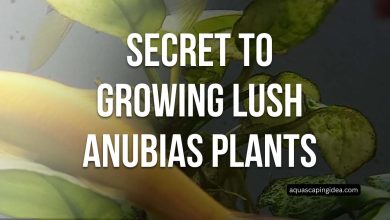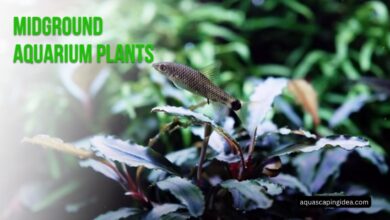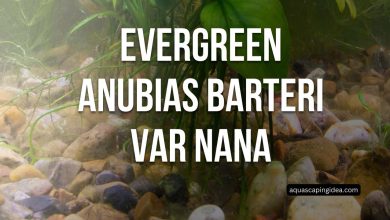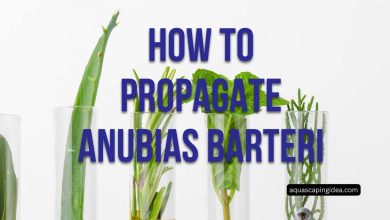Anubias Congensis Aquarium Plant

Anubias are a genus of aquatic plants highly valued in the freshwater aquarium hobby for their hardiness, attractive foliage, and slow growth. Of the many Anubias varieties, Anubias barteri var. ‘Congensis’ stands out as an especially easy and forgiving species – perfect for aquarists of all experience levels.
Undemanding Anubias Congensis: The Stress-Free Aquarium Plant
A native of the Congo River basin in Africa, Anubias Congensis features broad, triangular leaves with striking, bright-green coloration. Its slow, compact growth habit allows it to thrive in a wide range of tank setups and water conditions. Best of all, it demands very little specialized care compared to other aquatic plants.
Anyone looking for a hardy, beautiful aquarium plant should consider Anubias Congensis. Read on to learn all about keeping this aquatic gem.
Ideal Growing Conditions
Compared to most aquatic plants, Anubias Congensis is remarkably tolerant and adaptable. While it grows best within certain parameters, it can withstand a fairly wide range of tank conditions:
- Water Temperature: 72°F – 82°F. Tolerates temps as low as 65°F.
- pH: 6.0 – 7.5. Reports of tolerating pH as high as 8.5.
- Hardness: Soft to moderately hard water. 4 – 10 dGH range.
- Light: Low to moderate. Does fine in shaded spots. No direct sunlight.
Given the right general conditions, including nutrient-rich substrate, Anubias Congensis grows steadily. But its slow pace prevents it from becoming unruly or requiring frequent trimming like faster growers. Expect leaves to reach about 4 inches in length when fully mature.
Aquascaping Uses
A prime choice for aquascapes, Anubias Congensis lends itself to numerous design applications thanks to its hardy nature and attractive leaf form.
Use it to create:
- Shaded foreground areas
- Midground focal points
- Accent plants attached to hardscape
- Background filler around taller stems
The large, triangular leaves look especially nice when allowed to grow emergent out of the water. Try incorporating Congensis in a partially submerged layout with rocks or driftwood to showcase both its submerged and emergent leaf shapes.
Being an undemanding plant, Congensis works well in low-tech setups where specialized aquascapes with delicate species would fail. It also integrates seamlessly into high-tech tanks – simply provide ample nutrients and Congensis rewards you with lush green growth.
Care and Maintenance
Caring for Anubias Congensis chiefly involves addressing a few key needs: stable water conditions, nutrients, and proper lighting. Meeting these basic requirements is all it takes to keep this species happy for years on end.
Here’s a quick run-down of care guidelines:
Lighting
While tolerant of moderate light, Anubias Congensis does best with lower intensity lighting in the range of 50-100 PAR at substrate level. Signs of inadequate light include small, stunted leaves and a lime green coloration. Provide ample lighting and the leaves take on a rich Kelly green hue with broad, healthy growth. Standard fluorescent or LED aquarium lights work well.
Nutrients
Feeding is crucial for lush growth rather than just basic survival. Without adequate nutrition, the lower leaves slowly yellow and fall off over time. Use a quality aquatic plant fertilizer or specialized substrate to prevent deficiency. Root tabs further encourage strong rhizome development and vibrant foliage.
Substrate
Any fine-grain aquarium substrate works well, as long as it allows good water flow around the rhizome. Small gravel, sand, soil-based substrates, and specialty plant-optimized blends all suffice. The main goal is preventing complete burial and subsequent rotting of the horizontal rhizome structure. Allow it to remain 50-75% exposed to circulating water.
Water Conditions
Maintain stable, consistent water parameters in the ranges outlined earlier. Given the slow growth rate, Anubias Congensis has little impact on water chemistry – making it an attractive choice for low-maintenance setups. Perform regular partial water changes to replenish minerals and prevent the accumulation of organics.
Algae Control
With slower growth, algal growth often plagues the leaves. Manually remove what you can each week during water changes. Ensuring good water flow around the leaves, providing optimal nutrients, and not overdoing the lighting helps keep algae in check. Various algae-eating fish and shrimp also graze it effectively.
Propagation
Congensis propagates readily via rhizome division. Simply use a clean, sharp knife to cut a rooted section with at least 3 leaves. The cut stimulates new shoot growth from the rhizome node. Superglue gel or fishing line work to anchor newly divided plants until water-rooted.
By following these basic care guidelines, Anubias Congensis thrives for years on end. It’s one of the most resilient aquatic plants around – perfect for beginner and seasoned aquarists alike.
Frequently Asked Questions
How fast does Anubias Congensis grow?
Quite slowly. Expect just a few new leaves per year once established. Growth rate peaks at 1-2 inches per year for mature plants. The slow pace makes it an excellent choice for smaller tanks.
Does it require CO2 injection?
No. Anubias are adapted to low CO2 levels, having evolved in shaded river areas. Adding supplemental CO2 does boost growth, but is not essential for health.
Can Anubias be fully submerged?
A: Yes! Anubias naturally grow fully underwater. They also readily transition to emergent growth out of water provided ample humidity.
Is Anubias easy for beginners?
Definitely! Of all the aquatic plants, Anubias are some of the most forgiving for hobbyists of all experience levels. Their adaptability and slow growth allows for more margin of error in care.
Conclusion
For aquarists seeking the perfect beginner plant, or even just an undemanding accent for established setups, look no further than Anubias Congensis. This African native not only shrugs off imperfect water conditions, but brings intricate textures and lively colors to freshwater aquascapes. Steady fertilization in a moderate-light tank produces the healthiest long-term results and most pleasing aesthetic appeal. But even with suboptimal care, the species persists where fussier plants would perish. Cagey aquarists take advantage of its resilience and enticing visual properties to bring Congensis’s big, vibrant leaves into their custom underwater landscapes.




4 Comments